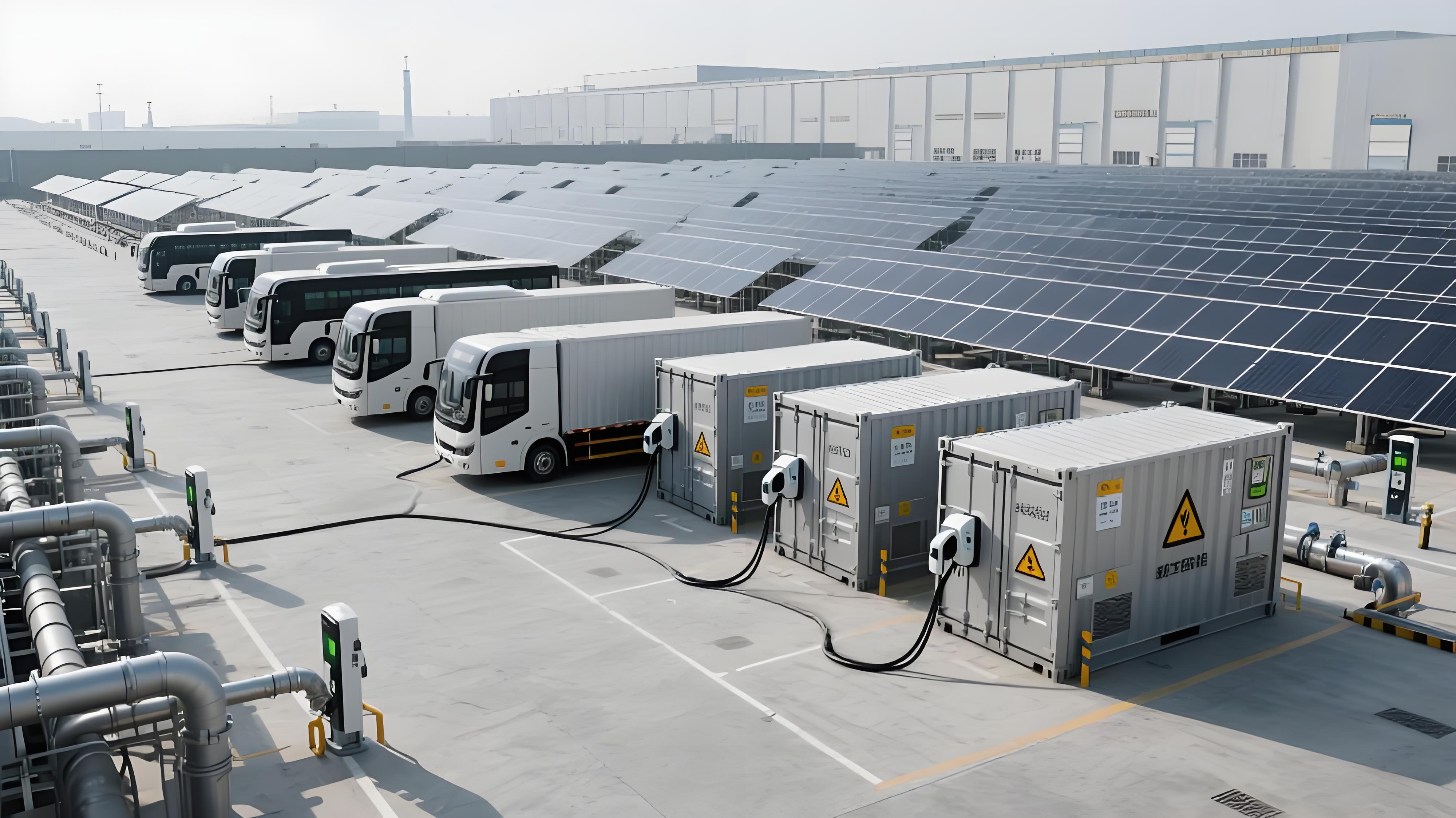
New Breakthrough in AC-DC Hybrid Microgrid: High-Efficiency Intelligent Energy System Empowers the Future
Driven by the double carbon goals, an AC-DC hybrid microgrid system integrating photovoltaic power generation, energy storage management, grid interaction, and vehicle-to-grid (V2G) charging is providing an innovative paradigm for efficient energy utilization. With a 77kW photovoltaic interface, 50kW grid interface, 30kW load interface, and 20kW V2G charging pile as the core, this solution achieves full-scenario intelligence in new energy power generation, energy storage dispatching, and load management through AC-DC collaborative control, creating an integrated "generation-storage-utilization-charging" energy closed-loop.
-
Equipped with a 200A photovoltaic DCDC converter, supporting wide voltage input of 200-680V, with an MPPT (Maximum Power Point Tracking) efficiency of 98%. It can track the maximum solar power point in real time, ensuring maximum utilization of photovoltaic energy with a rated power of 100kW.
-
Dual technologies of surge protection and intelligent MPPT adapt to complex lighting environments, stably outputting 750V DC bus power.
-
The 120A load DCDC converter supports constant voltage output at 375V on the low-voltage side, with a rated power of 30kW to meet the needs of various DC loads. The dynamic voltage stability is ±3%, ensuring the power supply quality for precision equipment.
-
Bidirectional energy flow design automatically adjusts power distribution according to load requirements, enhancing system flexibility.
-
The PCS1~2 grid-connected device has a rated power of 50kW, supporting three-phase three-wire (3W) output at AC400V. The power factor is adjustable from -0.9 to 0.9, with harmonic content ≤3%, ensuring strong grid compatibility.
-
Operating in a wide temperature range of -20℃ to 50℃, with an IP20 protection level suitable for various installation environments, and an intelligent air-cooling system to reduce operation and maintenance costs.
-
The 20kW V2G DC charging pile supports the GB2015 fast charging standard, is compatible with a voltage range of 200-750V, and has a conversion efficiency of >95%. It can both charge electric vehicles and supply power in reverse (V2G).
-
The charging gun supports more than 10,000 plugging and unplugging cycles, with an IP55 protection level for outdoor scenarios, and Pt1000 temperature monitoring to ensure charging safety.
|
Module
|
Key Indicators
|
|
Photovoltaic Interface
|
Maximum input power: 100kW, MPPT voltage: 200-750V, maximum current: 200A
|
|
Load Interface
|
Rated voltage: 375V, maximum current: 120A, rated power: 30kW
|
|
Grid Interface
|
Rated power: 50kW, AC400V, power factor: -0.9 to 0.9, harmonics ≤3%
|
|
V2G Charging Pile
|
Rated power: 20kW, voltage range: 200-750V, supports V2G bidirectional charging/discharging, efficiency >95%
|
|
Overall System Performance
|
Operating temperature: -10℃ to +45℃, protection level: IP20, weight <280kg, dimensions: 800×800×2100mm
|
-
Smart Power Supply for Industrial and Commercial Parks: Self-use of photovoltaic power + grid peak-valley arbitrage, reducing electricity costs by over 30%, with V2G charging piles providing bidirectional charging/discharging services for park electric vehicles;
-
Transportation Hub Charging Network: 20kW V2G charging piles support "plug and charge" for electric vehicles, which can supply power in reverse when idle, relieving grid load pressure;
-
Independent Power Supply in Off-Grid Scenarios: Photovoltaic + energy storage combination meets the stable power demand in remote areas, scenic spots, etc., automatically switching to backup power during outages;
-
Community Microgrid Construction: AC-DC hybrid architecture is compatible with household photovoltaics, energy storage batteries, and electric vehicle charging, creating a low-carbon community energy network.
-
Multiple Protection Mechanisms: Comprehensive coverage of overvoltage/undervoltage, overcurrent, overheating, and short-circuit protection, with automatic fault recovery to ensure continuous system operation;
-
High Protection Level: Charging pile IP54 and battery compartment IP55 protection, adapting to complex environments such as rain, fog, and dust;
-
Intelligent Monitoring System: 7-inch touchscreen + RS485 communication interface, supporting "three-remote functions" (remote measurement, control, and adjustment) for real-time monitoring of the entire system's operation status.
-
AC-DC Hybrid Architecture: Breaking through the limitations of traditional single grids, supporting multi-energy collaboration of photovoltaic DC power generation, grid AC power supply, and load DC power consumption, with an efficiency increase of over 15%;
-
V2G Bidirectional Interaction: Two-way energy flow between vehicles and the grid realizes "vehicle-grid interaction", charging during low valleys and discharging during peaks to create additional revenue;
-
Flexible Capacity Expansion Design: Modular architecture supports flexible expansion of photovoltaics, energy storage, and charging piles, adapting to project needs of different scales.
From technical parameters to on-site implementation, the AC-DC hybrid microgrid system is redefining the energy interconnection model with the advantages of "high efficiency, intelligence, and flexibility". Whether reducing energy costs, improving power supply reliability, or promoting innovative applications such as V2G, this system provides a feasible solution for energy transition under the "double carbon" goals.
In which scenarios do you think the AC-DC hybrid microgrid system can best reflect the value of "vehicle-grid interaction"? Share your insights in the comments!











































